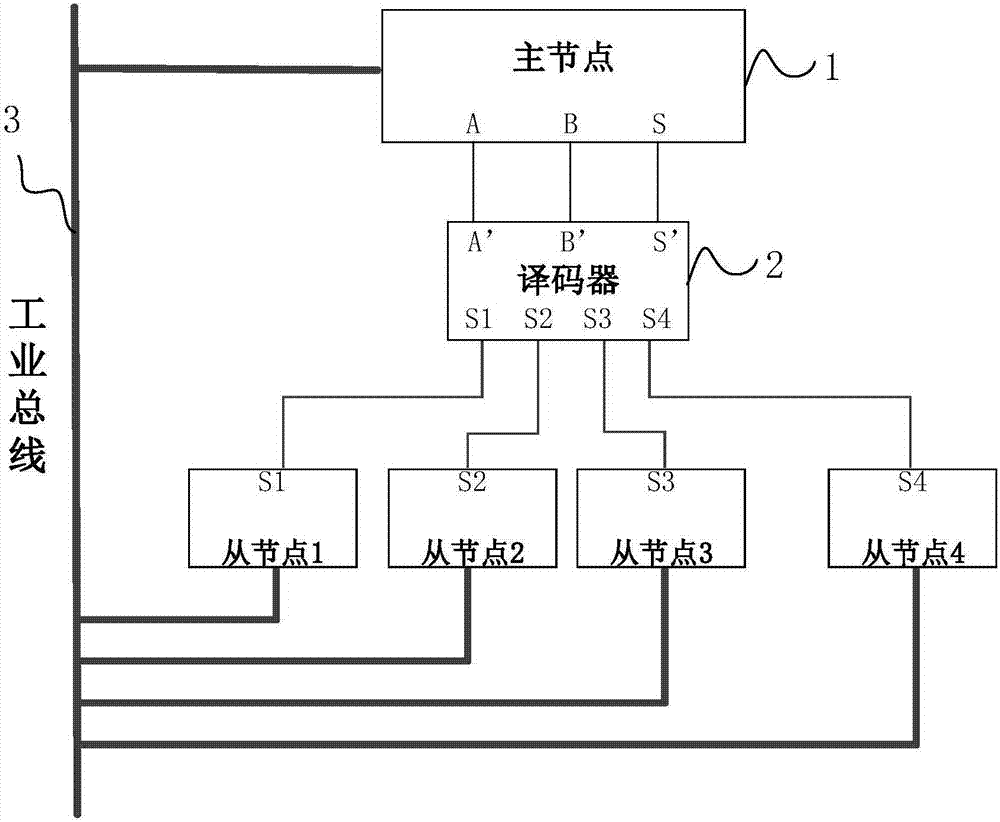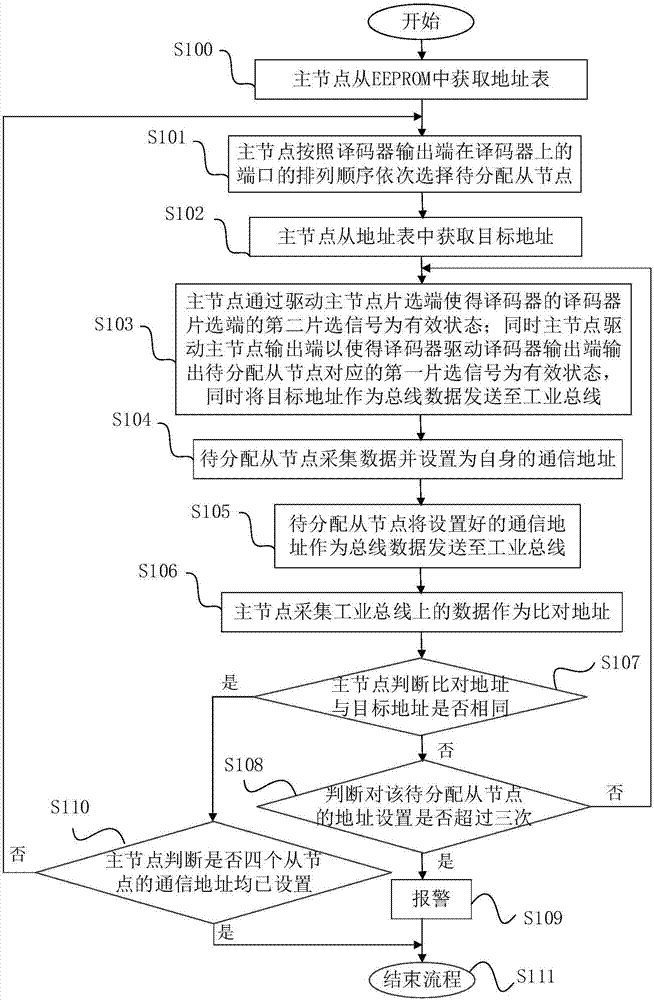System and method for automatically allocating communication addresses for slave nodes of industrial bus
An industrial bus, communication address technology, applied in transmission systems, electrical components, etc., can solve the problems of inconvenient unified management and maintenance of program versions, error-prone, and heavy workload of manual setting of DIP switches, to improve flexibility and reliability. performance, reduce workload, and save hardware costs
- Summary
- Abstract
- Description
- Claims
- Application Information
AI Technical Summary
Problems solved by technology
Method used
Image
Examples
Embodiment 1
[0058] Such as figure 1 As shown, a system for automatically assigning communication addresses of slave nodes of an industrial bus includes a master node 1, a decoder module and four slave nodes, and the four slave nodes are respectively slave node 1, slave node 2, and slave node 3 and slave node 4. Among them, the master node 1 includes two master node output terminals A, B and a master node chip select terminal S; the decoder module includes a decoder 2, the decoder 2 is a 2-4 decoder, and the decoder 2 includes two decoder input terminals A', B', a decoder chip select terminal S' and four decoder output terminals S1, S2, S3, S4; each slave node includes a slave node to use Energy terminals S1', S2', S3', S4'. The chip select terminal S of the master node is electrically connected to the chip select terminal S' of the decoder, and the output terminals A and B of the two master nodes are electrically connected with the input terminals A' and B' of the two decoders one by on...
Embodiment 2
[0065] Such as figure 2 Shown, a kind of method for the automatic distribution of the communication address of the slave node of industrial bus, this method uses the system of the automatic distribution of the communication address of the slave node of the industrial bus of embodiment 1, this method comprises the following steps:
[0066] Step S100, the master node 1 acquires an address table from the EEPROM, and the address table is used to store addresses to be allocated of all slave nodes;
[0067] Step S101, the master node 1 sequentially selects the slave nodes to be allocated according to the arrangement order of the decoder output terminal on the decoder 2, that is, first selects the slave node 1, and then sets the slave nodes 2, Slave node 3 and slave node 4;
[0068] Step S102, the master node 1 obtains the target address from the address table, and the target address is the address to be allocated corresponding to the slave node to be allocated;
[0069] Step S103...
PUM
 Login to View More
Login to View More Abstract
Description
Claims
Application Information
 Login to View More
Login to View More - R&D
- Intellectual Property
- Life Sciences
- Materials
- Tech Scout
- Unparalleled Data Quality
- Higher Quality Content
- 60% Fewer Hallucinations
Browse by: Latest US Patents, China's latest patents, Technical Efficacy Thesaurus, Application Domain, Technology Topic, Popular Technical Reports.
© 2025 PatSnap. All rights reserved.Legal|Privacy policy|Modern Slavery Act Transparency Statement|Sitemap|About US| Contact US: help@patsnap.com


